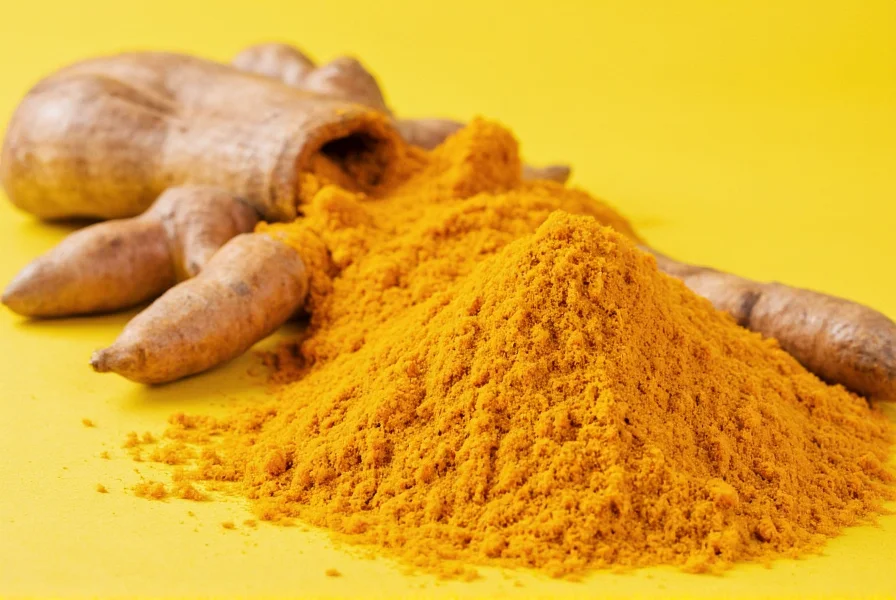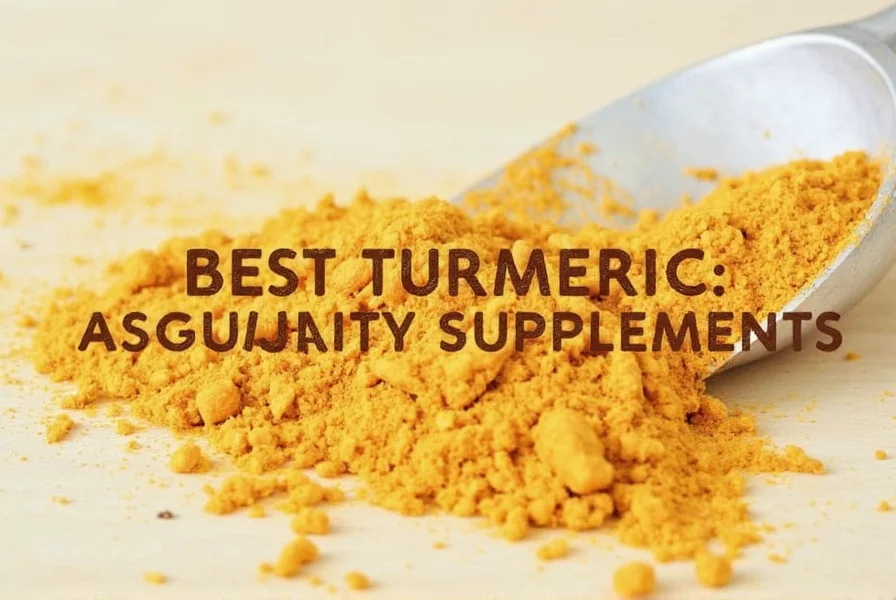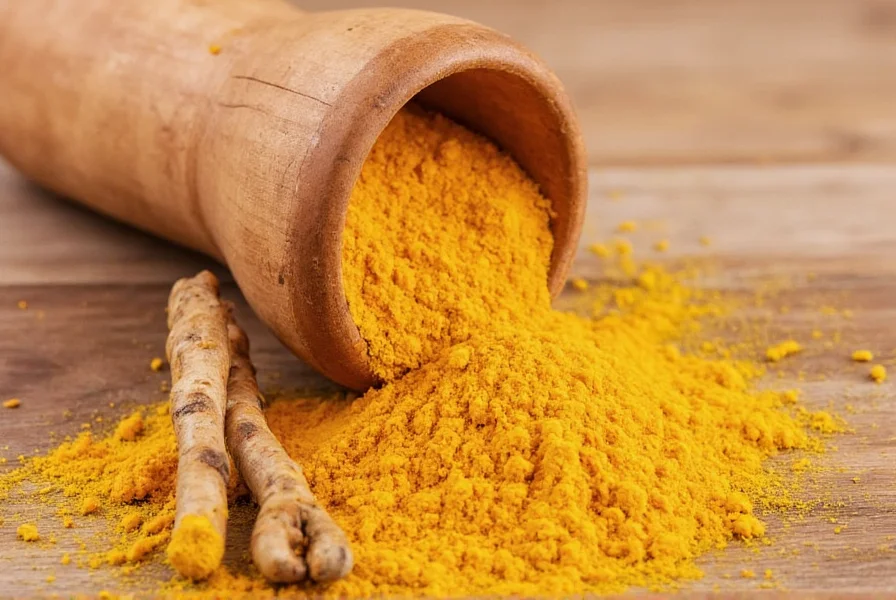When searching for the best turmeric supplement, understanding what makes certain products superior is essential for maximizing health benefits. Turmeric's primary active compound, curcumin, offers potent anti-inflammatory and antioxidant properties, but its effectiveness depends heavily on quality factors that many consumers overlook.
What Makes High-Quality Turmeric?
Not all turmeric supplements deliver equal benefits. The most effective options share specific characteristics that enhance absorption and therapeutic value. Curcumin, turmeric's key bioactive compound, has notoriously poor bioavailability when consumed alone. This explains why traditional preparations often combine turmeric with black pepper—a practice now validated by modern science.

Key Factors in Premium Turmeric Supplements
Three critical elements determine turmeric supplement quality: curcumin concentration, bioavailability technology, and purity verification. Products containing 95% curcuminoids provide significantly more active compounds than standard turmeric powder, which typically contains only 2-5% curcumin.
Without proper formulation, up to 80% of consumed curcumin passes through the body unused. This is why the best turmeric for inflammation includes absorption enhancers. Scientific research shows that combining curcumin with piperine (from black pepper) can increase bioavailability by 2,000%. Alternative technologies like liposomal delivery or nanoparticle formulations also dramatically improve absorption.
Third-Party Testing: The Quality Assurance Standard
Reputable manufacturers subject their products to independent laboratory testing. Look for supplements verified by organizations like USP, NSF, or ConsumerLab. These certifications confirm that what's on the label matches what's in the bottle and that products are free from heavy metals, pesticides, and other contaminants.
| Formulation Type | Curcumin Absorption Rate | Key Advantages |
|---|---|---|
| Standard Turmeric Powder | 1x (baseline) | Affordable, widely available |
| Curcumin Extract (95%) | 1x | Higher curcumin concentration |
| Curcumin + Piperine | 20x | Proven bioavailability boost, cost-effective |
| Liposomal Curcumin | 50-60x | Superior absorption, no digestive upset |
| Nanoparticle Curcumin | 185x | Highest absorption, premium pricing |
Evaluating Turmeric Product Labels
When comparing options for the best turmeric supplement, scrutinize labels carefully. The phrase 'standardized to 95% curcuminoids' indicates a concentrated extract. Products listing 'turmeric root powder' without standardization typically contain minimal curcumin. Check for additional ingredients that either enhance absorption (like piperine) or dilute potency (like unnecessary fillers).
For those seeking the best turmeric for joint health, look for clinical-strength doses of 500-1,000mg of curcumin per serving. Research suggests this range provides therapeutic benefits while remaining well-tolerated. Avoid products with magnesium stearate or titanium dioxide, which some studies suggest may reduce absorption or pose health concerns.

Scientific Evidence Behind Turmeric Benefits
Over 30 clinical trials demonstrate turmeric's effectiveness for reducing inflammation markers. A 2022 meta-analysis published in Nutrients found curcumin supplementation significantly reduced CRP (C-reactive protein) levels, a key inflammation marker, by an average of 20.3 mg/L compared to placebo.
The most compelling evidence supports turmeric's role in joint health. Research shows that high-quality curcumin formulations can reduce osteoarthritis pain as effectively as some NSAIDs, but without gastrointestinal side effects. For optimal results when choosing the best turmeric for arthritis, select products with proven bioavailability technology and therapeutic dosing.
Practical Buying Considerations
Price shouldn't be the primary factor when selecting turmeric supplements. A $10 bottle containing low-potency turmeric may cost more per effective dose than a $30 bottle of high-quality curcumin extract. Calculate cost per milligram of actual curcumin to make accurate comparisons.
Storage matters more than many realize. Curcumin degrades when exposed to light and air. The best turmeric supplements come in dark glass bottles with oxygen absorbers. Check expiration dates carefully—curcumin potency decreases significantly after 18-24 months.
Maximizing Turmeric Benefits Through Diet
While supplements provide concentrated benefits, incorporating whole turmeric into your diet offers additional advantages. Cooking turmeric with healthy fats (like olive oil or coconut milk) and black pepper creates a synergistic effect that enhances absorption. Golden milk, a traditional Ayurvedic beverage, exemplifies this principle by combining turmeric with fat and piperine-rich black pepper.
Frequently Asked Questions
What is the most absorbable form of turmeric?
Liposomal and nanoparticle curcumin formulations demonstrate the highest absorption rates, with studies showing 50-185 times better bioavailability than standard curcumin. These advanced delivery systems protect curcumin from degradation in the digestive tract and enhance cellular uptake. For practical everyday use, curcumin combined with piperine (black pepper extract) offers excellent absorption at a more accessible price point, increasing bioavailability by approximately 2,000%.
How much curcumin should a quality turmeric supplement contain?
The most effective turmeric supplements contain 500-1,000mg of standardized curcumin extract (95% curcuminoids) per serving. Research indicates this range provides therapeutic benefits for inflammation and joint health. Be cautious of products listing 'turmeric' without specifying curcumin content, as raw turmeric contains only 2-5% curcumin. For optimal results, look for supplements that clearly state both the total turmeric extract amount and the standardized curcumin percentage.
How can I verify if my turmeric supplement is pure and potent?
Look for supplements with third-party verification seals from organizations like USP, NSF, or ConsumerLab. These certifications confirm the product contains the labeled amount of curcumin and is free from contaminants like heavy metals and pesticides. Reputable brands provide Certificates of Analysis (COAs) showing independent lab testing results. Check for products manufactured in FDA-registered, GMP-certified facilities, which adhere to strict quality control standards. Avoid products without transparent sourcing information or those making exaggerated health claims.
Can I get enough curcumin from dietary turmeric alone?
It's challenging to achieve therapeutic curcumin levels through dietary turmeric alone. You would need to consume approximately 15-20 grams of standard turmeric powder daily to match the 500mg curcumin dose found in quality supplements. This amount is impractical and could cause digestive discomfort. Cooking turmeric with black pepper and healthy fats improves absorption from food sources, but for targeted health benefits, especially for inflammation management, standardized supplements remain the most effective option.











 浙公网安备
33010002000092号
浙公网安备
33010002000092号 浙B2-20120091-4
浙B2-20120091-4